
I mentioned in my previous article that Vitosha is not only the name of the famous market street of Sofia, but there is something else too. Something, which is actually the ‘real’ Vitosha that the market street is named after. This was a bit confusing when I asked a shopkeeper how to go to Vitosha: she told me that ‘it is only a couple of metres away on foot’, but she did not know that I meant another thing that could be reached only by public transportation. So let’s get out of the city’s messy everydays and go for a hiking trip into the wilderness…
…because namely, Vitosha is originally the name of Sofia's enormous mountain, which is already visible from the long market street. This stone giant guarding over the city is more than 2000 meters high, and certainly is a paradise for winter sports and hiking.


I could not stop comparing it to Pohorje near Maribor, Slovenia where I spent a half year, because the shape, distance, location and function of the two mountains and their roles in the two cities were very similar.
I immediately started thinking that Vitosha is like an ‘extended’ or ‘next level’ version of Pohorje: higher, wilder, more dangerous and colder than its Slovenian counterpart.
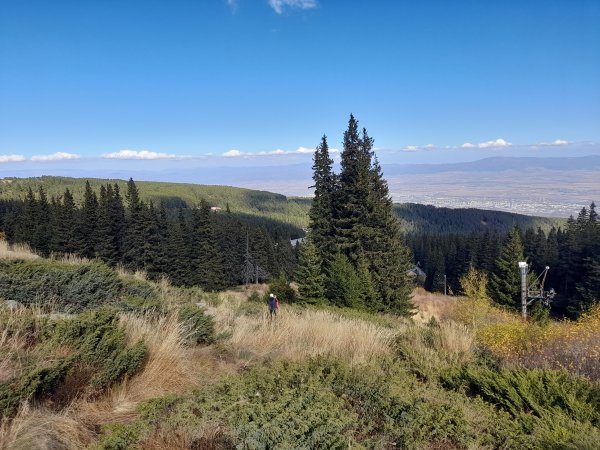

Going to Vitosha, which really deserved a whole day to spend, meant a similar experience as well, because we used a chair lift, again, just like in Pohorje. However, this time it took much longer to go up with the Simeonovo lift (named after a city district and eventually after the famous tsar of Bulgaria).



As we were ascending among incredibly tall pine trees and long, rocky valleys, the breathtaking view of Sofia was slowly appearing on the horizon with its white town houses, which made me to recall places like Lykabetos in Athens, Tibidabo in Barecelona or Mariborsko Pohorje I already mentioned before.
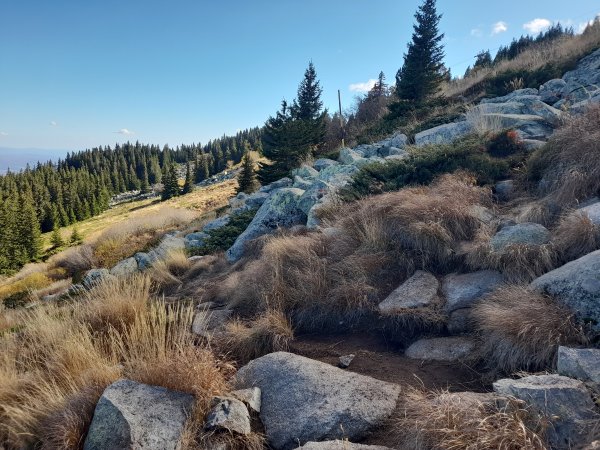

Although there were plenty of lift lines around the mountain with many stations and we saw plenty of restaurants, huts, pubs, accomodations and so on, the intact beauty and ancient magic of the forest still had the same impact on us with all the rocks, brooks, trees, fields and plateaus one could see.

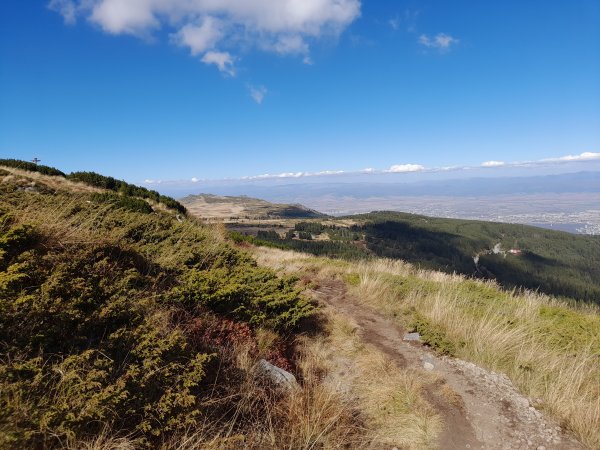
I was afraid that the crowd would be destroying the vibes and the silent atmosphere somehow, but fortunately, it was not the case, and when I was intending to climb to the very top of the peak, I could mostly find people who respected nature and tried to act responsibly.


Be careful if you decide to take this half an hour walk from the starting point, Aleko hut to the peak, because it can be slippery with the mud and grass or painful with the stones.
Mind your steps, but if you know your limits, take this challenge, because there is no image that could replace the pure illusion of flying like a bird what I experienced on the top.



At the same time, I realized that this was also the highest place in the world where I had ever walked, so this feeling and the view are something that cannot be immortalized; not even with thousands of photographs made in the moment.
Up on the mountains it felt like such a spiritual travel that I suddenly understood why Orthodox monks preferred to have their hardworking and pious communities in abandoned and hidden places.


Vitosha perfectly served such a purpose for them to find peace, admire Creation and meet God through prayers and contemplation - that is why there were sacred buildings above from small wooden chapels to huge monasteries like Dragalevski Monastery, which, again, due to lack of time we could not visit.
Speaking of monasteries, the most fascinating one of the countryside is located in Rila mountains, which can be reached within a couple of hours from Sofia by bus.



Another interesting spot can be the sacred pit of Garlo in Pernik province: a giant well in the middle of the forest, which dates back to the pagan times of the so-called megalith cultures (Stonhenge also belongs to this culture for instance).
Maybe these sites are not directly related to Sofia and can be found in other regions of Western Bulgaria, but they can both be planned as parts of a greater trip, if one has the time and the chance.


Now it is time to change the topic and move onto a lighter, but still very crucial part of Bulgarian culture. Since we talk about the Balkanic region, it is impossible not to put the local cuisine a little bit in the focus, which was influenced by Slavic, Greek and Turkish ingredients, such as feta cheese, chevap/kebab (a type of meat), cucumber, tomato and various kinds of salads.


An excellent and almost obligatory example is Shopska salad, named after the Shopi people who live in the bordering regions of Bulgaria and Macedonia: this simple and delicious meal includes mainly only tomato, cucumber, onion, sheep cheese and olive oil, but it works perfectly as a side dish too.
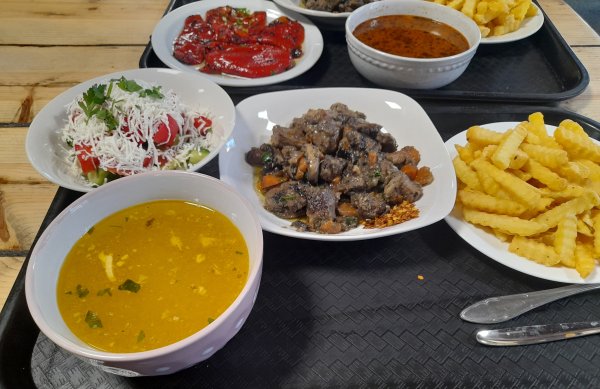

When we had a lunch in the hut up on Vitosha, we could discover a lot of similarities to the Hungarian cuisine as well, such as chicken soup or bean soup.
Two other traditional courses were also on the table: Lutika chicken and Rhodope-style pork, both using the good old techniques of putting some roasted meat and a mix of vegetables together, such as potato, tomato and eggplant.

Regarding the typical Bulgarian breakfast, I can proudly state that I have tried the legendary Bulgarian yogurt, which is officially drunk without additional flavors; for outsiders, just as me, this can be a strange experience, because the original yogurt like that tastes a bit sour.
It was interesting for me to read that although the origin of yogurt is usually connected to Turkey, Bulgaria also claims that it is the homeland of this popular dairy product. Well, surely it was invented by Nomadic people, and both ancient Turks and Bulgars were Nomadic Turkic by origin.

If this sour taste is too much for you like it was for me, it is possible to try the flavored versions of the yogurt: I was even joking about it that most probably only children and such untrained foreign tourists drink it like me.
When we entered the bakery, it was a special encounter for me to see banitsa: a bakery product which is similar to Slovenian and Croatian burek.
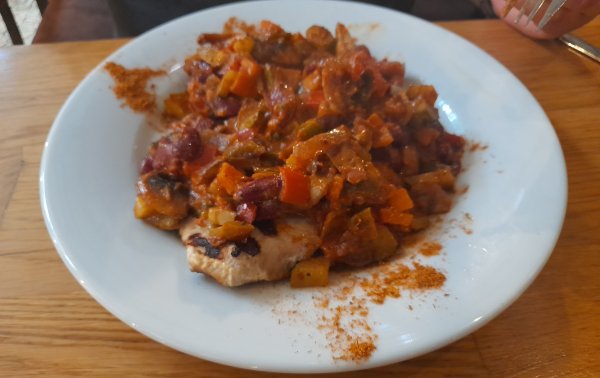

Therefore, just as its relative, banitsa is also made of puff pastry and can be filled with many different things like cottage cheese, spinach, crushed meat or potato. An ideal, satisfying portion for breakfast for sure; although the dough’s taste and ingredients are a bit different from the ones of other countries.
One should not forget the sweets either: for example, it is typical to buy chocolate decorated and flavored with rose petals, and there is a particular jelly candy of almonds – a tradition which Bulgaria shares with Greece.

Pancakes, just as in Hungary or Poland are very popular in Bulgaria, but I also tried Bulgarian donuts called ponichka or buhtichki: the first word recalls pączek, the Polish word for donut, while the second one obviously reminded me to bukta, an extremely delicious Hungarian sweet usually filled with jam.
I saw something in a shop window too that reminded me to our lángos, but finally it turned out that it was called mekitsa, a Bulgarian fried dough.
The most famous alcoholic spirit, the grape-based rakia (a Balkan relative of Hungarian pálinka) should not be missing from the table either after a great lunch or dinner, but the local wine tradition is very strong as well.


As a summary, the food in general is not just cheap in Bulgaria, but it mostly has an excellent quality and a satisfying quantity, no matter where tourists come from. I also have to praise the coffee, which was cheap, strong and delicious everywhere; even if one tried it in a small tobacco shop or street bar instead of a top quality café in the city center.
Apart from trying the local gastronomy, one can observe the Bulgarian folk tradition and art in many souvenir shops and market places: the gobelins, wovens, carpets, table covers and other textiles or the ceramics are all characteristic and wonderful representations of the folklore motifs.

However, there are other particular figures with their weird devil faces and huge fur: they are the famous kukeri, the traditional folklore characters of the carnival season, and also part of a Balkanic and Eastern-European tradition.
Namely, Hungarian busó and Slovenian kurent are similar devilish, satyrlike carnival creatures, although all of them have a little bit different appearance.
Thinking back of Sofia after almost a month makes me feel that it is a city where one could absolutely live, because it has not only an adorable landscape and a rich history, but it is mostly modernized with all the necessary services and opportunities.
It is often said that the rest of Bulgaria is not so developed, but as usual, the capital is an exception, and in spite of all the inconvenient things we experienced, I think Sofia breaks many stereotypes about Bulgaria and the Balkans in general.

Communication was not a barrier either, because most of the people (apart from some very local restaurants and shops) spoke English, and there were Latinized transcriptions everywhere (okay, even if not, I could read Cyrillic letters, but it is another story).
One of the difficulties though occured with the public transportation: it was not about that it was not developed or practical enough, because the tickets were cheap and obvious how and where to use them.

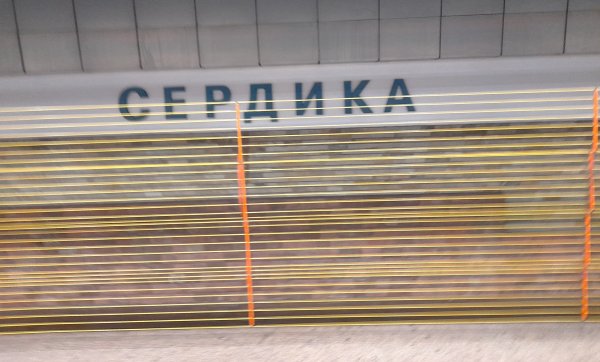
I rather think that the problem was caused by the metro and tram lines, because sometimes it was not clear which direction they took and which part of the line one was riding. Since some networks were going all around and returned to the starting point, this led to some misunderstanding during the trip.
There were some clever ideas though like cages rolling down at the underground station as a security measure when the metro was coming.
It was also interesting that one could buy tickets in the tram directly from the driver who had a small cash desk inside. To be honest, we tried it, but it did not work out. Maybe it would have been just a matter of time, and we were just not Sofians enough for that yet…

Last fun fact: don't think that you are crazy if you hear the sound of seagulls: although Sofia is not by the sea at all, there is nothing wrong with your hearing. Namely, the birds were chased away from their natural habitats due to the increasing number of tourists at the beach and the concerning amount of pollution there.
At the same time, since the 1950s, they have discovered that big cities like Sofia are full of food and garbage, which means survival itself for them; even though the city lies in the heart of the continent, far from the sea.
Well, I would like to say a farewell with the picturesque image of these birds, because I myself also felt like a wandering seagull when I stayed in Sofia: in a city which could be a home for me somewhere in an alternative reality. However, I cannot settle down yet, because I need to continue my journey to fly towards my new and distant seas…
